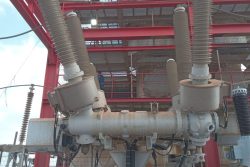In a year of contentious elections, the current standoff in Belarus underscores the importance of supporting democracy at moments of crisis. Following presidential elections on August 9, Alexander Lukashenko has refused to accept that a rigged poll which allotted him 80 percent of the vote, and a sixth term in office, could not withstand international scrutiny. Facing protests which claimed an outright victory in the first round of voting for the independent candidate Svetlana Tikhanovskaya, Lukashenko called on his security forces to silence the protests. The violence that ensued – in the first four days, 7,000 people were detained and hundreds more were beaten with clubs, shot with rubber bullets and attacked with stun grenades – had the opposite effect. Outrage quickly consolidated anti-government resistance and increased the scale and reach of the protests. It also prompted the EU to intervene by sanctioning officials it deemed responsible for “violence, repression and election fraud.”
Opposition to President Lukashenko has been gathering momentum for years. A weak economy and a bungled response to the pandemic has exacerbated widespread discontent with the regime’s neoliberal tendencies and its unreconstructed attitudes. This was catalysed by what one observer has called the government’s ”rapid and pre-emptive” efforts to prevent rival candidates contesting the recent election, actions that brought back uncomfortable “memories of the first post-Soviet decade.” That is why, despite multiple attempts to intimidate voters and undermine the process, Belarusians voted in unprecedented numbers. The government’s increasingly harsh crackdown has only made its citizens more determined.
During a period in which the Trump administration has interfered with the US Postal Service in order to discourage Democratic voters in November, Minsk’s mass protests offer a shaming contrast to American apathy. One notable difference is the way grassroots resistance has emerged in Belarus. Svetlana Tikhanovskaya is the wife of a detained dissident, Siarhei Tsikhanouski, whose video blog attracted a large following after it chronicled human rights violations and the results of President Lukashenko’s failed economic policies. When harassment failed to deter Tsikhanouski he was detained on trumped-up charges. He then announced his intention to run for president. When the Election Commission refused his registration, his wife ran instead. The Tikhanovskaya campaign’s direct, populist style may be gauged by its slogan (“Stop the cockroach!”) and its chosen symbol, a slipper.
If the outcome in Belarus turns on Moscow’s willingness to support Lukashenko, the protests may prevail. Putin has a limited appetite for taking on enraged and engaged civilians, especially since Lukashenko’s likely successors have come to prominence without the support of the usual anti-Soviet Western support. Ten years ago, Russia did nothing while popular protests toppled Kyrgyzstan’s second president, Kurmanbek Bakiyev, because Bakiev had tried to solve a Moscow-induced energy crisis by striking a deal with China. Likewise, Putin did little to prevent protests in Armenia from dislodging prime minister Serzh Sargsyan. Lukashenko has thumbed his nose at Moscow on more than one occasion and even accused it of enabling the protests, so the Kremlin will not mourn his ouster. Even now, with Lukashenko making vague allegations that the US has supported the anti-government protests, Russia’s next steps are far from obvious.
Belarus’s protests have shown the extraordinary courage of ordinary people; their willingness to draw a line in the sand when they feel overlooked or dismissed. Many of the recent demonstrations have been led by women who have been driven to the protests by the security forces’ savage beatings of their male relatives. Their bravery, in particular, has been a vivid example of what nonviolent resistance can do, in the space of a fortnight, to unsettle and possibly bring to an end a quarter-century of undemocratic government.





